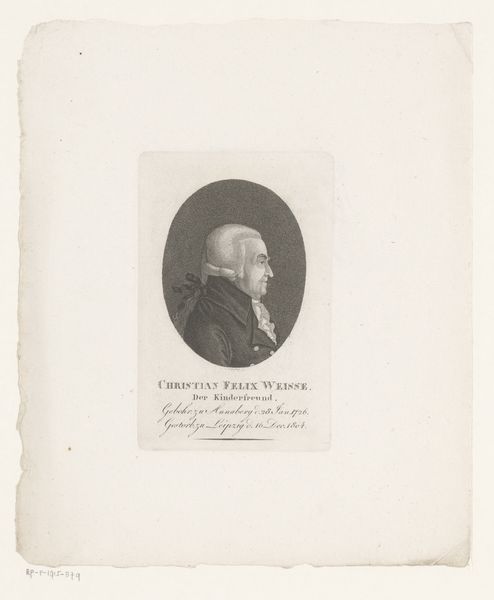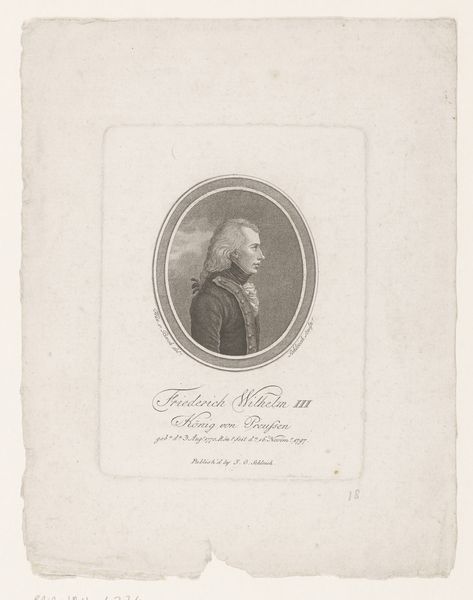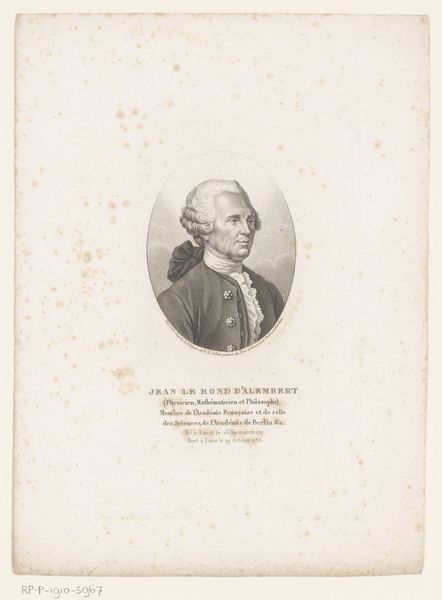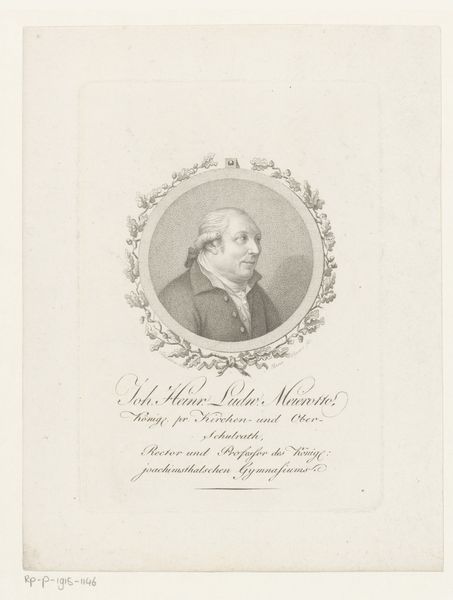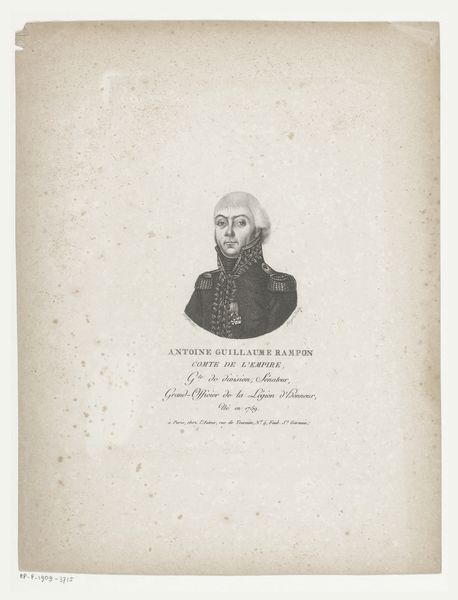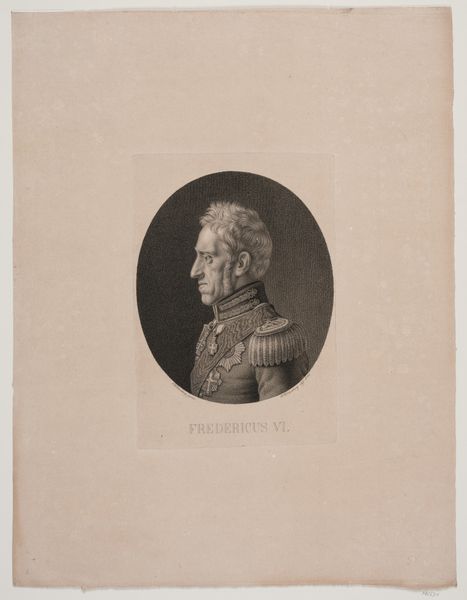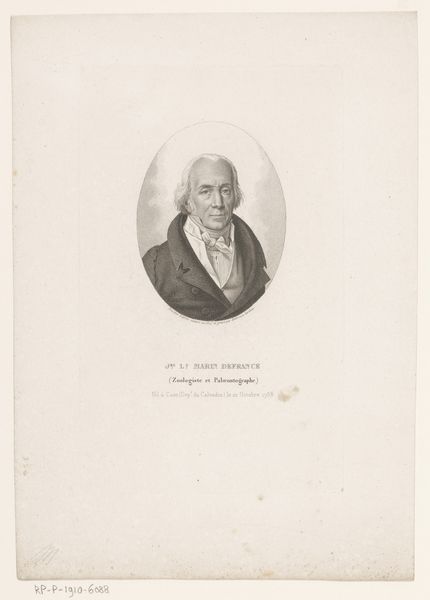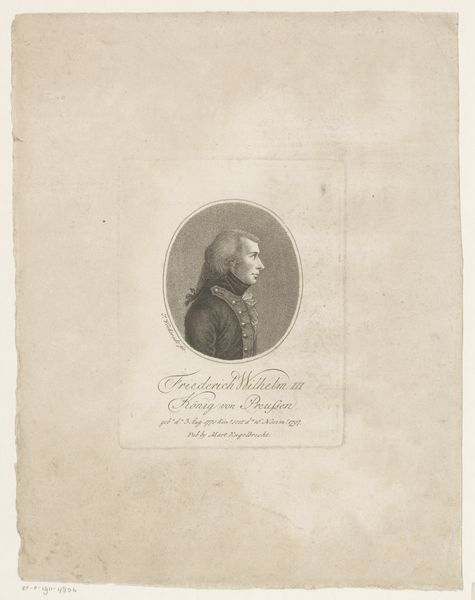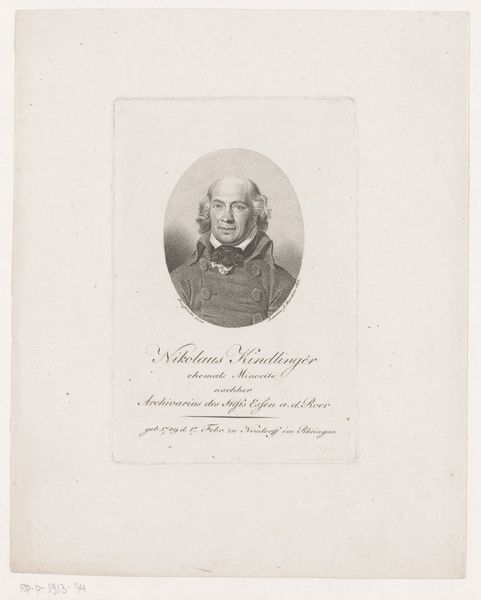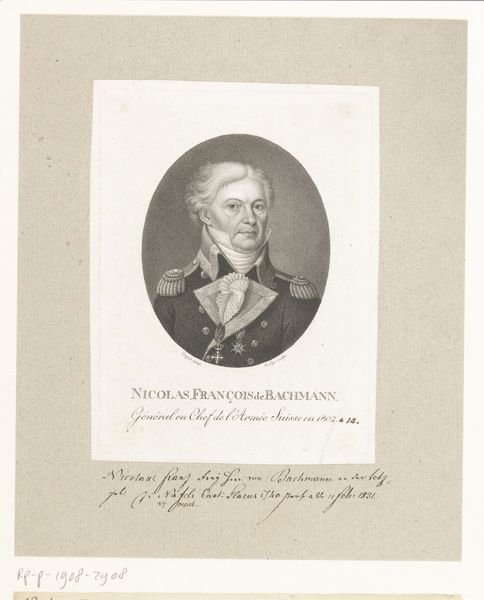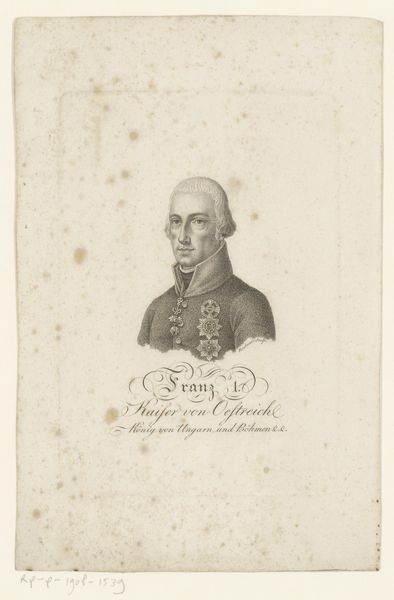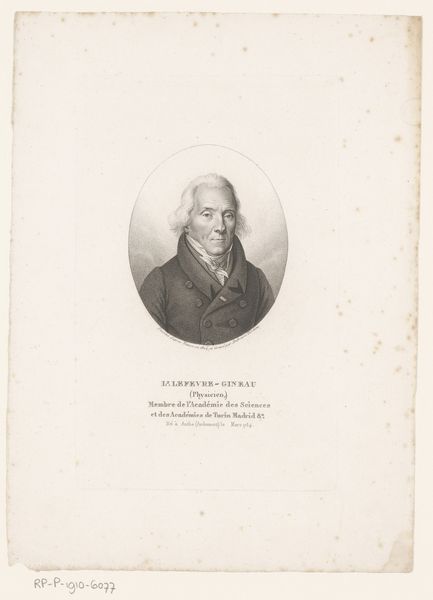
engraving
#
portrait
#
neoclacissism
#
old engraving style
#
history-painting
#
engraving
Dimensions: height 187 mm, width 117 mm
Copyright: Rijks Museum: Open Domain
Editor: This is an engraving from 1816 by Jean Emanuel Desmoulins titled "Portret van Ferdinand I" – or "Portrait of Ferdinand I." It’s a neoclassical style portrait in an oval frame. I find it a little austere, what’s your interpretation of this piece? Curator: That austerity speaks volumes about the era. This engraving presents Ferdinand I not just as an individual, but as a symbol of restored Bourbon authority after the Napoleonic era. Consider how portraits function politically – what message is the artist trying to convey, and for whom? Editor: So it's more than just a likeness? Curator: Precisely. Engravings like this were widely circulated. The crisp lines and classical framing lend an air of legitimacy. He’s presented with the symbols of state, it reinforced the Bourbon claim. What's your reading of that expression on his face? Editor: He looks... determined? Maybe a little severe? Curator: Exactly! It isn’t just about the likeness. Think about who was consuming these images. How might they have reacted to the idea of royal power and authority presented with these particular choices? This engraver is engaging in shaping political reality, creating a visual language that asserts power in a post-revolutionary world. Editor: I see your point. It's about legitimizing Ferdinand and Bourbon power using carefully chosen artistic conventions. Thanks! I'll certainly view such portraits differently now. Curator: It's amazing when we engage into thinking that the way images participate in political discouse.
Comments
No comments
Be the first to comment and join the conversation on the ultimate creative platform.
